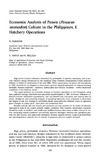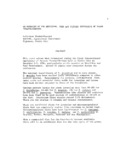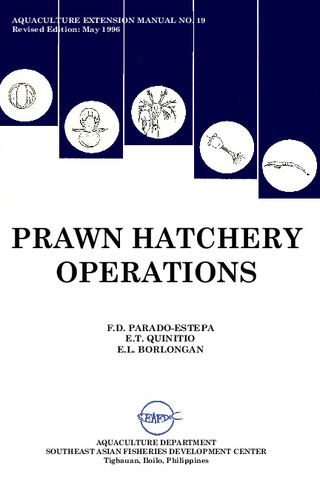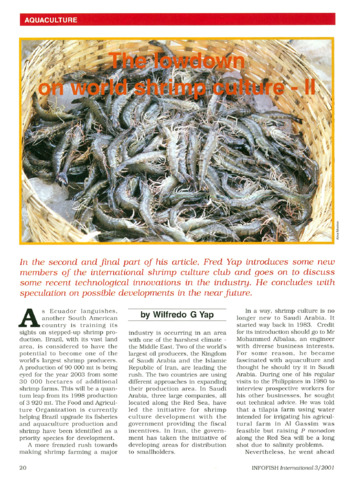Economic analysis of prawn (Penaeus monodon) culture in the Philippines, I. Hatchery operations
Share
Abstract
High prices of prawn (Penaeus monodon) fry, profitability of hatchery operations, and a low cost hatchery design introduced by the Southeast Asian Fisheries Development Center attracted millions of dollars of investments in the mid-1980s. When export prices for prawn fell dramatically in 1989, demand for fry dropped as most prawn growers stopped operations or reduced stocking densities. Natural calamities – typhoons, earthquakes and volcanic eruptions – further depressed conditions in the hatchery sector.
This paper presents an economic analysis of hatchery operations in the Philippines using data gathered through interviews and structured questionnaires in 1992. Economic indicators estimated include: investment requirements, unit cost, benefit over cost ratios, and internal rates of return. Breakeven and sensitivity analyses of operating hatcheries were employed to determine the degree of risk and changes in profitability levels associated with different scales of operation given changes in output price, input price and production level.
Results indicate that net income per production run was positive for all scales of hatchery operation in spite of the current adverse market conditions. New hatchery investments, however, should be made in medium- and small-scale facilities because these have a better chance to survive worsening market conditions and periodic spawner shortages. Medium-size operations provide the best returns, and large-scale operations showed negative returns. Large-scale hatcheries are operating below capacity due to scarcity of spawners and low market demand.
Suggested Citation
Agbayani, R. F., Hatch, U., & Belleza, E. (1995). Economic analysis of prawn (Penaeus monodon) culture in the Philippines, I. Hatchery operations. Asian Fisheries Science , 8(3-4), 191-200. http://hdl.handle.net/10862/1469
Subject
Taxonomic term
Collections
- AQD Journal Articles [1248]
Related items
Showing items related by title, author, creator and subject.
-
An overview of the nutrition, feed and feeding techniques of prawn penaeid/shrimps
Piedad-Pascual, Felicitas (Philippine Council for Aquatic and Marine Research and Development, 1989)This paper echoes what transpired during the first International Conference of Penaeid Prawns/Shrimps held in Iloilo City in December 4-7, 1984, particularly on the Nutrition nd Feed Development. Around 25 papers were ... -
Prawn hatchery operations
Parado-Estepa, Fe D.; Quinitio, Emilia T.; Borlongan, Emeterio L. (Aquaculture Department, Southeast Asian Fisheries Development Center, 1996-05)The manual, an updated version of the 1984 SEAFDEC/AQD manual, presents the underlying principles and step-by-step instructions of prawn larval and post-larval rearing. The techniques described are not only applicable to ... -
The lowdown on world shrimp culture - II
Yap, Wilfredo G. (INFOFISH, 2001)This paper introduces some new members of the international shrimp culture club and goes on to discuss some recent technological innovations in the industry, particularly the polyculture of tilapia (mainly Oreochromis ...




